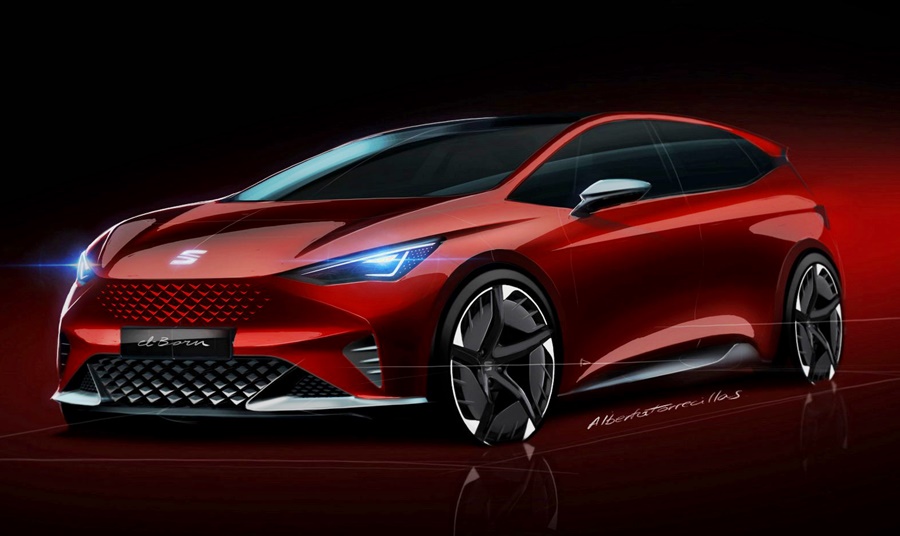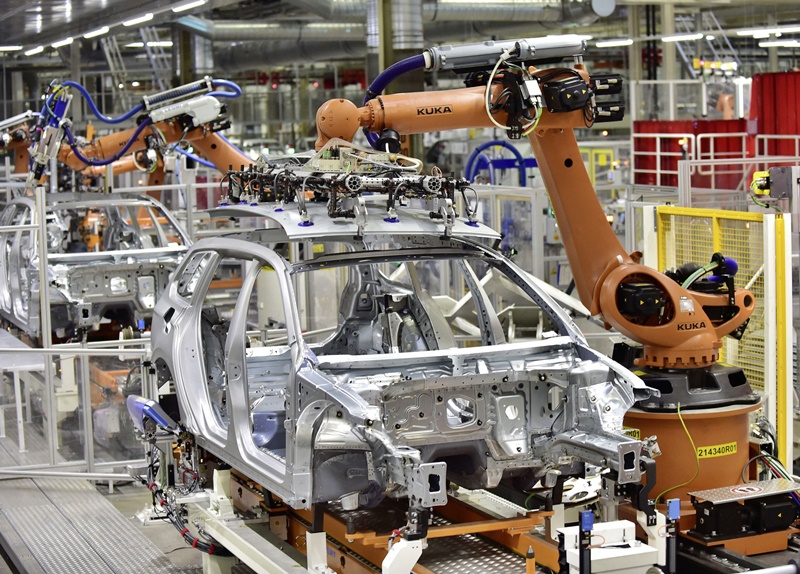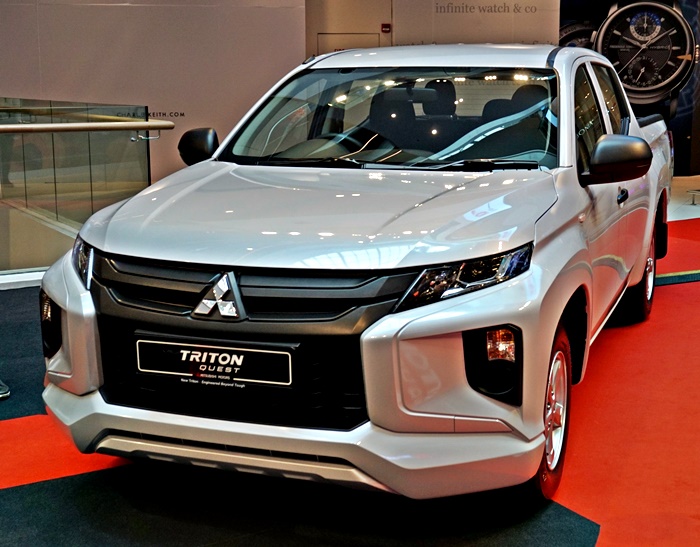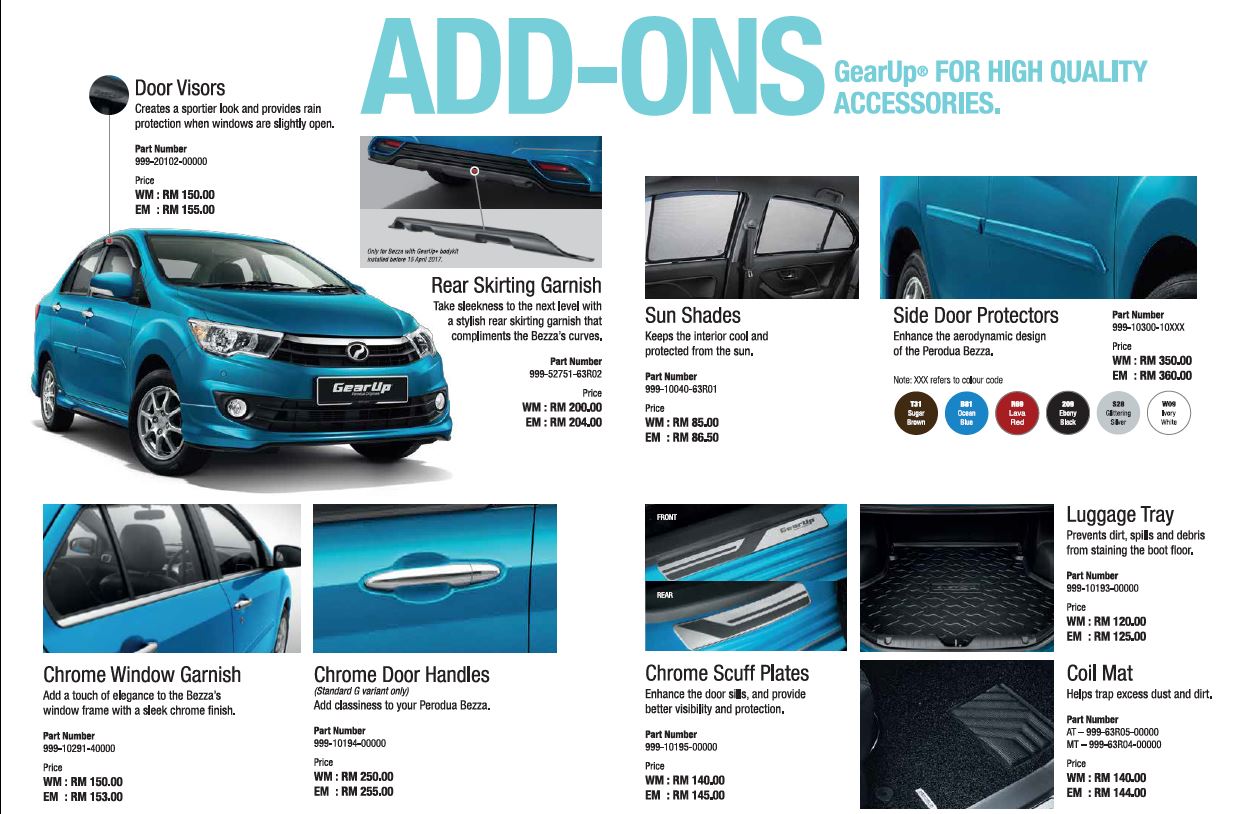SEAT, like other carmakers (especially in Europe), is steadily making the transition towards electrification, an important move to meet increasingly tough legislative requirements in the years to come. The emission levels are so low that it is necessary to use hybrid powertrains if not all-electric ones to meet them.
Interestingly, however, the Spanish carmaker will launch its first all-electric model next year using its high-performance CUPRA brand rather than the SEAT brand. The reason for this is said ‘to be to change the dynamic perception of electrically-powered vehicles’.
The new electric model will be based on the el-Born Concept which was shown at the Geneva Motor Show in 2019. Since then, the design team and the SEAT Technical Centre have been working on the production model, continuing to evolve the vehicle. Some of the changes they have made have given it a sportier character and an even more impressive visual appeal.
“CUPRA el-Born displays all the genes of the CUPRA brand and we have taken the original concept to the next level creating a new sporty and dynamic design and reengineering the technological content. CUPRA el-Born is the living proof that performance and electrification are a great match,” said CUPRA CEO Wayne Griffiths.

The performance and dynamics of the CUPRA el-Born have been a clear focus during the development of the car, and acceleration from 0 – 50 km/h will be within 2.9 seconds. The Dynamic Chassis Control Sport (DCC Sport), which has been exclusively developed within the VW Group MEB platform for the CUPRA el-Born, combines the low driving height of the car with a system that is adapting automatically to any conditions, offering a superior level of driving dynamics.
For now, the company will reveal that the el-Born will have features such as Head-up Display with Augmented Reality and a range of up to 500 kms on a fully charged battery pack. The 77 kWh battery pack can be fast-charged within 30 minutes which will provide at least 260 kms of range, it is claimed.
The interior is designed to encapsulate the CUPRA philosophy of quality and performance mixed with sophistication. This is highlighted in the sports bucket seats, the steering wheel with Drive Profile Selection and CUPRA mode buttons, and high-quality material choices. CUPRA puts a particular focus on the sustainability of the el-Born using recycled materials in the interior of the car.

The model will be manufactured at the Volkswagen Group factory (SEAT is part of the Group) in Zwickau, Germany. This factory has been renovated and configured to produce electric vehicles for the Group’s different brands from 2021. It will have a production capacity of up to 330,000 electric vehicles a year.
All-new SEAT Leon designed to continue as Spain’s bestselling car
For some time now, Mitsubishi Motors authorized dealerships around Malaysia have been undergoing a transformation in their appearance and presentation to conform to the new brand Visual Identity (VI). The change has been progressively introduced to some 5,000 dealerships worldwide since 2019.
The move is based on the new brand message ‘Drive your Ambition‘ and is intended to provide a better customer experience in a high quality retail environment and to strengthen Mitsubishi Motors’ brand image.
The new VI features black, white and grey colour schemes with red dynamic lines as an accent. The uniform design will also ensure a coherent experience for customers across all points they touch the brand, from motor shows, websites and brochures to the dealership.
The architecture reflects the new Corporate and Visual Identity, with a ‘Dynamic Slope’ as a signature element to present the robust and dynamic image of the brand. Inside, the showroom is designed to provide a better customer experience, while the cars are presented to make sure they’re seen as the stars.
First in Melaka
To date, 20 of the dealerships in Malaysia feature the new VI, with the latest being Sing Kwung Jidosha in Melaka. Sing Kwung Jidosha, located in Taman Industri Malim Jaya, is the first Mitsubishi Motors showroom in Melaka with the new VI. As a 3S facility, the dealership offers sales, service and spare parts under one roof.
With a built-up area of 10,000 square feet, the upgraded 3S Centre houses a comfortable customer lounge with wifi and sufficient space to display up to 4 vehicles. Its service centre is fully-equipped workshop and can handle up to 5 vehicles daily.
There is also a Body and Paint facility which provides repair and refinishing services. Needless to say, any parts replaced are genuine Mitsubishi Motors parts or approved by the manufacturer. The technicians also use advanced diagnostic tools and Special Service Tools to ensure that the work done is up to the brand’s high standards.

“I would like to thank Sing Kwung Jidosha, for successfully completing this showroom with a new Mitsubishi Motors VI! With an enhanced brand image, this represents our commitment to put customers as the foremost priority, providing them with a seamless experience when they visit our showrooms, and in a more comfortable ambience,” said Tomoyuki Shinnishi, CEO of Mitsubishi Motors Malaysia.
Click here for other news and articles about Mitsubishi Motors.
Ten months after Lamborghini launched the Sian as its first production hybrid super sportscar, an open-top variant has been unveiled. Only 19 units will be produced – and all are already sold.
The Sian Roadster, as a true roadster, adds a new purity with the open-air cabin. The aerial view of the car is reminiscent of the iconic periscopio line inspired by the first Countach, running diagonally from the cockpit to the rear and culminating in the aerodynamic airstreamers behind driver and passenger.
The long sculptured contours and characteristic aero wings give the Sian Roadster an unmistakably powerful profile. The car’s very low front, with integrated carbonfibre splitter, houses the iconic Lamborghini Y-shape headlights.
The extreme and strong rear of the car incorporates Lamborghini’s evocative hexagon design, including 6 hexagonal taillights inspired by the Countach. The rear wing is integrated within the profile and extends out only during the driving to enhance the performance.
To optimize aerodynamic efficiency, airflow is directed through the front splitters and through the front bonnet, through the side air intakes and outlets and over the rear spoiler, with no loss of aerodynamic efficiency from the roadster’s roofless design.
Active cooling vanes on the rear use unique materials-science technology patented by Lamborghini. The operation of the vanes is triggered by the reaction of smart-material elements to the temperature generated by the exhaust system, causing them to rotate and providing an elegant and lightweight cooling solution.
The Sian Roadster makes its debut in Blu Uranus, especially selected by Lamborghini’s Centro Stile, which works together with the Ad Personam department to entirely personalize the colour and finish of each client’s Roadster.
The Oro Electrum wheels have a colour chosen by Lamborghini to signify electrification. The complementary interior is an elegant combination of white with Blu Glauco detailing and aluminium elements in Oro Electrum, New-design air vents produced via 3D printing allows customization with a client’s initials.
The Sian Roadster is powered by the same hybrid system as the coupe which provides the highest power possible via the lightest solution. It combines the V12 engine with a 48-volt e-motor, delivering 34 hp, which is incorporated into the gearbox to provide immediate response and improved performance. The e-motor also supports low-speed maneuvers such as reversing and parking with electric power.
With the advanced technology, the engine, which incorporates titanium intake valves, has been uprated to 785 bhp. With an additional 34 bhp from the hybrid system, the maximum output is 819 bhp, giving the Sian Roadster a claimed capability of going over 350 km/h. From standstill, it is claimed to be able to accelerate from 0 to 100 km/h in less than 2.9 seconds.
The powertrain has Lamborghini’s innovative supercapacitor application – a world-first technology storing 10 times the power of a lithium-ion battery. Located in the bulkhead between cockpit and engine, it ensures perfect weight distribution.
Three times more powerful than a battery of the same weight and three times lighter than a battery producing the same power, the electric system with the supercapacitor and e-motor weighs only 34 kgs. It thus delivers a remarkable weight-to-power ratio of 1.0 kg/hp. Symmetric power flow ensures the same efficiency in both charging and discharging cycles, the most lightweight and efficient hybrid solution.
There’s also a highly sophisticated regenerative braking system, especially developed by the carmaker. The symmetric behaviour of the supercapacitor, contrary to normal Li-Ion batteries, can be charged and discharged with the same power. It fully charges the energy storage system every time the vehicle is being braked.
The energy stored is an instantly-available power boost, allowing the driver to draw immediately on increased torque when accelerating away (up to 130 km/h) when the e-motor automatically disconnects. This improves the elasticity maneuvers and makes it more than 10% faster than a car without this system.
“The Sian Roadster encapsulates the spirit of Lamborghini,” said Stefano Domenicali, Automobili Lamborghini Chairman & CEO. “It is the expression of breathtaking design and extraordinary performance, but most importantly embodies important future technologies. The Sian’s innovative hybrid powertrain heralds the direction for Lamborghini super sportscars, and the open-top Sian Roadster affirms a desire for the ultimate lifestyle Lamborghini as we move towards a tomorrow demanding new solutions.”
Sian – Lamborghini’s first production hybrid super sportscar
Click here for other Lamborghini news and articles
About a week ago, on July 3, Perodua’s dealer in Brunei launched the latest Myvi for that market. It was the usual sort of launch of a new model but among the variants displayed was one called the Myvi S-Edition. The existence of such a variant caught the Perodua people by surprise since they do not have any Myvi S-Edition sold in Malaysia or anywhere else in the world.
Some Perodua fans who keep up with news of their favourite brand also noticed the ‘special edition’ and wondered why it was available in Brunei but not Malaysia. Well, it is not unusual that some markets may have a variant or specification which are not available in the home market of the manufacturer. These may be export versions or specially developed versions to suit certain markets.
In the case of the Myvi S-Edition, the variant had a bodykit to enhance its looks but this bodykit was not developed by Perodua and it appears that they were not aware of it either, from what we gather from the statement issued by Perodua’s President & CEO, Dato’ Zainal Abidin Ahmad.
“Perodua Brunei introduced its own version of the Myvi 1.3L G variant, dubbed the S-Edition, which include enhanced bodykits which were sourced independently by our appointed distributor GHK Motors,” he said.
“Based on the feedback from GHK Motors, the introduction of the Myvi S-Edition was its attempt to introduce a variant that was better suited to their market needs. We are engaging with GHK Motors for more details about this variant to ensure that the additions to this variant meet the required standards,” he added.
The statement was issued today for clarification as Perodua is aware of some confusion caused to its loyal customers.
Like other manufacturers, Perodua is serious about protecting its image and reputation, especially where it concerns quality. When it develops its cars, every part and system is thoroughly tested for durability and reliability before it is approved for use. This is understandable since a defective or unreliable part can cause a breakdown and in an extreme case, even an accident, and that is something a responsible manufacturer like Perodua will not want to cause.

Even bodykits and other accessories are subject to the same rigorous testing by the R&D division to ensure they meet the required standards. Therefore, if a distributor or dealer wants to install items which did not come with the car, they must first let Perodua test the items and give its approval.
Proton also had a similar issue long ago with its distributor in the Philippines which also assembled the Wira. The company there added a turbocharger to the engine in the Wira for sale to the public. This was a modification which had not received Proton’s approval and certainly, it was against warranty conditions. If the engine failed due to the turbocharger boosting performance and causing too much stress, for example, the customer would likely blame Proton and that would spoil its reputation.
In the 54-year history of the Toyota Corolla, there have been different bodystyle variants which, in a way, reflected consumer tastes and requirements of the difference periods. The model started off with a 2-door and 4-door sedan and a stationwagon, the 4-door variant being the most popular by far.
Then there was the Liftback, which offered hatchback versatility in a sleeker shape and for the younger enthusiasts, a coupe and a hardtop were also offered, available with the powerful 2T-G twincam engines. In fact, one generation of the coupe – the fifth generation of the Corolla with the code AE86 and the domestic name of ‘Levin’ – would become legendary and much sought after even up till today. A MPV-like variant called the Corolla Spacio was also developed towards the end of the 1990s and it was manufactured by Toyota Auto Body.
Responding to the SUV boom
Today, most of the variants are no longer available as Toyota streamlined the model range to focus only on the high-volume sedan. However, with the continuing growth of the SUV market, it has decided that the Corolla should also have a bodystyle to cater to this booming segment.
This is the new Corolla Cross which had its global debut today in Thailand where it is made. With ‘Corolla Meets SUV’ being the key phrase for the development of the Corolla Cross, the model was designed with a sturdy image combined with the utility typical of such vehicles.
TNGA platform with hybird powertrain available
It sits on the TNGA platform (GA-C) that is used for recent and future models and has a rear torsion beam suspension. The spacious cabin includes luggage space of up to 587 litres which is claimed to be class-leading. Safety-wise, it is engineered and equipped at a similar level as the Corolla Sedan and should therefore be able to rate the maximum of 5 stars when ASEAN NCAP assesses it.
Depending on the market, customers will have a choice of either a hybrid powertrain or just a petrol engine, both using a 1.8-litre engine. The engine, when used in the hybrid powertrain, produces 98 ps/142 Nm, with the electric motor adding 72 ps/163 Nm, but the total system power output available is 122 ps. The petrol engine alone is rated at 140 ps/177 Nm.
Introducing the Corolla Cross, Daizo Kameyama, Chief Engineer in charge of development, said: “Now that the Corolla Cross has newly joined the Corolla family, we sincerely hope that our customers will warmly welcome the vehicle to become part of their families: just like their partners, siblings or even friends. We wish that the Corolla Cross could assist customers in creating a new story by loading on their vehicle the people who are important to them, the luggage, and their dreams for the future.”
Will we get it in Malaysia?
As the Corolla is imported in CBU (completely built-up) form from Thailand, there’s no reason why the Corolla Cross cannot also be imported. It would certainly give UMW Toyota Motor an extra model offering, which car-buyers like. It would most likely not be the hybrid since that would cost more and as the government is not providing any incentives to help lower the retail price, it would be better to just sell the petrol engine variant.
